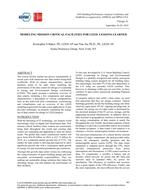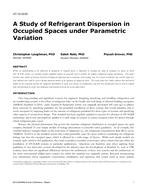Click here to purchase
France is committed to minimizing its greenhouse gas emissions by focusing on the most energy-consuming sector, the residential and tertiary building sector. The renovation of existing buildings and the construction of energy efficient ones are therefore proposed as a possible solution. However, the concept of efficiency is ambiguous and difficult to measure and compare without common parameters and indicators. Indeed, a performance indicator is a decision support tool that describe the specific situation of something based on certain parameters. This article focuses on the Indoor Air Quality (IAQ) measure in new nearly zero energy houses, based on CO2 as a parameter. We reviewed the literature, standards and regulations in order to identify a selection of 10 CO2-IAQ performance indicators. We calculated each of them using a long term monitoring dataset (3 years) from two connected and occupied nearly zero energy houses in France (COMEPOS project). We performed the calculation during the heating seasons, in the living rooms and the parental bedrooms. Each room was equipped with a low-cost CO2 concentration sensor sampling every minute. We compared the indicators values between them and to the thresholds of different requirements in order to highlight the relevance and the limits of the information provided by those common CO2-IAQ performance indicators. According to the selected indicator, the IAQ is differently classified (good/poor) in the two houses at the same room and year. The preliminary evaluations in bedrooms show a difference of 20-34% on the average concentration and a difference of 28-70% on the cumulative exposure greater than 1000 ppm. Thus, a house can be characterized differently depending on the indicator and the years evaluated.
Citation: IAQ 2020: Indoor Environmental Quality
Product Details
- Published:
- 2020
- Number of Pages:
- 9
- File Size:
- 1 file
- Product Code(s):
- D-IAQ2020-C42
- Note:
- This product is unavailable in Belarus, Russia


